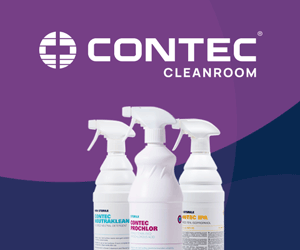Hygiene standards in hospitals are critical as patients who are weak or have recently undergone surgery are easy prey for bacteria and germs. In addition to hand hygiene and clean clothing, the rooms need to be regularly cleaned. Materials experts at Bayer MaterialScience have developed an extremely robust wall coating that makes it easier to combat harmful germs.
The danger usually lies dormant and invisible to the naked eye, hidden away: in hospitals, germs such as resistant bacteria or normally harmless intestinal bacteria can spread and put patients’ health at risk. Even where hygiene standards are at their highest, stubborn and harmful micro-organisms can grow – toughened through acquired resistance in their daily fight for survival against antibiotics and cleaning agents.
According to a study by the European Centre for Disease Prevention and Control (ECDC), 3.2 million people each year in Europe acquire an infection while in hospital. Approximately 80,000 patients per day require treatment for hospital acquired infections (HCAIs) that they have contracted while undergoing therapy. For weakened patients, the consequences may be life-threatening: pneumonia, urinary tract infections and wound infections or even blood poisoning. Worst affected are patients in intensive care.
The high durability polyurethane coating technology has markedly better resistance to scrubbing with disinfection chemicals such as strong bleach solutions, hydrogen peroxide and quaternary ammonium salts
The unwanted germs can gain a hold anywhere. Thorough hygiene measures are therefore the rule in every hospital: hands, the patient’s personal possessions, laundry and refuse have to be comprehensively disinfected. There are also strict rules dictating how cleaning staff must clean the floors and walls, from operating theatres to corridors. To remove particularly stubborn bacteria, this usually involves using very strong disinfectants – but there is a drawback: ‘The aggressive cleaning agents generally fiercely attack the walls in patient rooms and in the corridors,’ explains Steven Reinstadtler, Construction Marketing Manager at Bayer MaterialScience.
As a result, colours change and surfaces become porous. ‘Not only does this quickly look shabby, it is sometimes also counter-productive, as it becomes easier for bacteria to gain a hold than on smooth surfaces,’ says Reinstadtler. And it is costly: patient rooms or waiting areas consequently have to be repainted up to four times a year. ‘In the US, this costs around US$3,000 per room. On top of that, the rooms being painted are obviously out of action for a while, which means lost revenue for the hospital,’ says Reinstadtler.
The materials experts working in Reinstadtler’s team have therefore developed a new technology for wall paints. The high durability (HD) polyurethane coating technology has markedly better resistance to scrubbing with disinfection chemicals such as strong bleach solutions, hydrogen peroxide and quaternary ammonium salts.
‘Coatings with the Bayer technology are more than four times more durable than premium wall paints,’ says Reinstadtler. And that saves money: ‘Durable paints reduce costs for robust walls in a hospital by up to 80% on average. This makes a huge difference financially,’ explains the Bayer expert.
The secret of the durability of the Bayer paint lies in its special composition: it consists of two components that chemically crosslink. The matrix of the new HD coating consists of polyurethane. It is very resistant to abrasion and does not dissolve even on contact with caustic chemical cleaning agents. The matrix is formed by reacting a water-based hydroxyl polyacrylic dispersion with a water-soluble isocyanate molecule with very high reactivity, crosslinking the components very densely with one another. The many close bonds form an extremely tough and durable surface.
‘Water and chemicals are virtually unable to penetrate and damage the coating. This means that the coating stays non-porous, eliminating indentations or cracks in which germs or dirt can collect,’ explains Reinstadtler.
Modifiable for different applications
Other robust wall coatings are already available but these have two distinct disadvantages: conventional paints are usually based on strong-smelling solvents, and most robust wall coatings are high-gloss. Neither is a problem outdoors, such as for painting bridges or pipes. Inside buildings, however, odours and high-gloss effects are unwelcome. And this is precisely where the Bayer technology comes into play: ‘The coatings based on the HD technology are durable, nearly odourless on application and low-gloss. Until now, no paints have been available that combine all three properties,’ says Reinstadtler.
The coating stays non-porous, eliminating indentations or cracks in which germs or dirt can collect
With this new paint, Bayer materials experts responded very specifically to the needs of architects, painting firms and hospital managers: ‘We got together with everyone involved in the value chain – such as facility owners, contractors from painting firms and paint manufacturers – and, as a result, developed a high-quality product that meets all requirements and, above all, takes into account the cost factor,’ he explains.
Bayer had originally developed its HD technology for scratch-resistant and robust floor coatings. ‘But we then took the concept further and adapted it, for example, to exterior paints for protecting against unwanted graffiti,’ says Reinstadtler. The painted surfaces are so smooth that graffiti can simply be washed off with water. ‘We are firm believers in this technology, which is why we have also optimised it for use in hospitals.’
The first hospital walls painted with the Bayer technology are already dry in the US; however, many of the architects and engineers that work with challenges in the healthcare environment also have clients with similar problems in the hospitality, governmental, higher education and sport venues sectors. For example, the HD technology has been used in the concession areas and restrooms at the stadium of the Los Angeles Dodgers baseball team.
The potential of the wall paints is far from being fully exhausted. The Bayer scientists are constantly seeking new applications for their technology. As Reinstadtler says: ‘Using antibacterial substances as additives, there is still further potential in the hygiene sector.’




